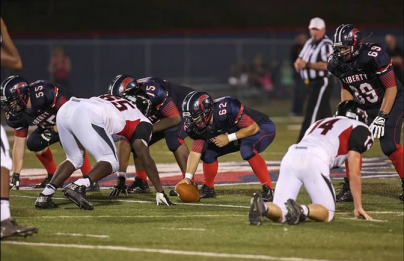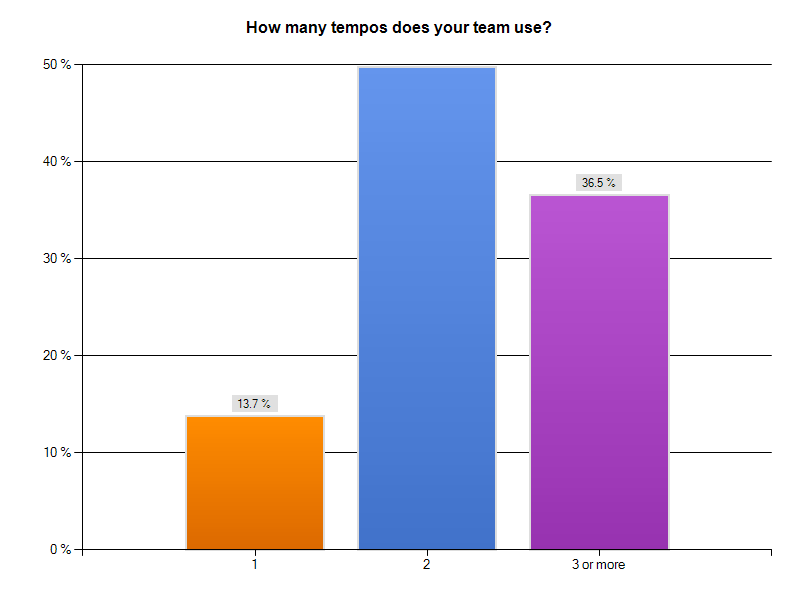By Sam Nichols
Managing Editor
X&O Labs
Twitter: @SNicholsXOLabs
 One buzz word that came up repeatedly in the surveys and interviews we conducted for this report was the word "tempo." Through that research, we found that this term has different layers of meaning to no huddle coaches depending on what they are trying to do. Here is the working definition we derived from the research:
One buzz word that came up repeatedly in the surveys and interviews we conducted for this report was the word "tempo." Through that research, we found that this term has different layers of meaning to no huddle coaches depending on what they are trying to do. Here is the working definition we derived from the research:
Tempo = a methodical approach to creating a strategic advantage for the offense by controlling the pace of play in a football game.
In short, "tempo" is more than just going fast. It can mean doing slow at times, short spurts of speed, or even creating a rhythm for the defense so their increase comfort can be used against them. It all comes back to the teams game plan and having the tools in place to take advantage of the defense through the pace of play.
Before we get into the different strategies that teams use to control the tempo, let’s take a look at the data. Our research shows that 86% of schools are intentionally running multiple tempos in games with 36% using 3 or more tempos commonly. In addition, coaches in our survey identified "creating a strategic advantage" and "forcing the defense to simplify" as the top two reasons for adopting the no huddle in the first place. This shows just how important the concept of "tempo" is to no huddle teams.
One buzzword that came up repeatedly in the surveys and interviews we conducted for this report was the word “tempo.” Through our research, we found that this term has different layers of meaning to no huddle coaches depending on what they are trying to do. Here is the working definition we derived from the research:
Tempo = a methodical approach to creating a strategic advantage for the offense by controlling the pace of play in a football game.
In short, “tempo” is more than just going fast. It can mean going slow at times, short spurts of speed, or even creating a rhythm for the defense so their increase comfort can be used against them. It all comes back to the team’s game plan and having the tools in place to take advantage of the defense through the pace of play.
Before we get into the different strategy that teams use to control the tempo, let’s take a look at the data. Our research shows that 86% of schools are intentionally running multiple tempos in games with 36% using three or more tempos commonly. In addition, coaches in our survey identified “creating a strategic advantage” and “forcing the defense to simplify” as the top two reasons for adopting the no huddle in the first place. This shows just how important the concept of “tempo” is to no huddle teams.

One could argue that without utilizing some sort of “tempo” philosophy, a team might as well still be huddling. One coach we spoke two during the research process explained how his head coach was so slow calling the plays that they went from “no huddle” to “slow huddle” (minus the huddle of course). Unfortunately, that coach is not alone. We received many additional comments from coaches who felt that they were not able to really take advantage of the potential “tempo” advantages of the no huddle.
That is where studies like this are crucial. We have dedicated the next several pages of material to showing coaches how coaches around the country are managing “tempo” for their teams and ways that any coach can refine and implement those concepts today.
The Power of Tempo:
“Tempo” may not mean “fast,” but the coaches that participated in this study suggest that increased offensive speed sets up the team to change the tempo in different ways. In many cases, these coaches argued that the tempo was almost as important as the offensive scheme itself.
They would inevitably go on to list some, if not all, of the following advantages:
- Makes Conditioning a Factor: An increased speed that leads to a longer game rewards the team that is prepared physically for those extra reps. Teams can then use that concept as a motivator for their own players and create a culture of endurance.
- Ability to Read the Defense: Reading a defense isn’t just about x’s and o’s. It is also about their demeanor and their conditioning. Teams that have mastered the art of using tempo in games are always looking to see if the defense is getting tired, changing personnel, or getting too comfortable and then reacting with the appropriate tempo change to take advantage.
- Triple the Reps John Konecki from Crete-Monee High School (IL), said it best in our survey when he responded, “The secret sauce of the no huddle is the number of reps a team can run throughout a practice session.” Some coaches said they were literally getting three to four times the reps since eliminating the huddle. That not only creates better conditioned players, but it allows for a significant more opportunities to get better at what you do.
- Engagement and Excitement: The ability to engage the players in a practice and team philosophy can’t be underestimated. In our research, coaches mentioned repeatedly the positive impact that more reps in practice has had on team moral citing more reps for non-starters, faster pace, and shorter practices as the things that the players liked the most.
- Create Rhythm: Aaron Sauter, Northwest High School (IN): “We use tempos to get our primary playmakers active in the game from the beginning of the game. If we feel that going at a specific tempo will give us a significant advantage we will begin with that tempo to start the game. If we find that our playmakers are not getting in a rhythm during the game or if we do not gain an advantage, we will use the tempo that our team feels most comfortable working at regardless of opponent. A key advantage that we gain is th









